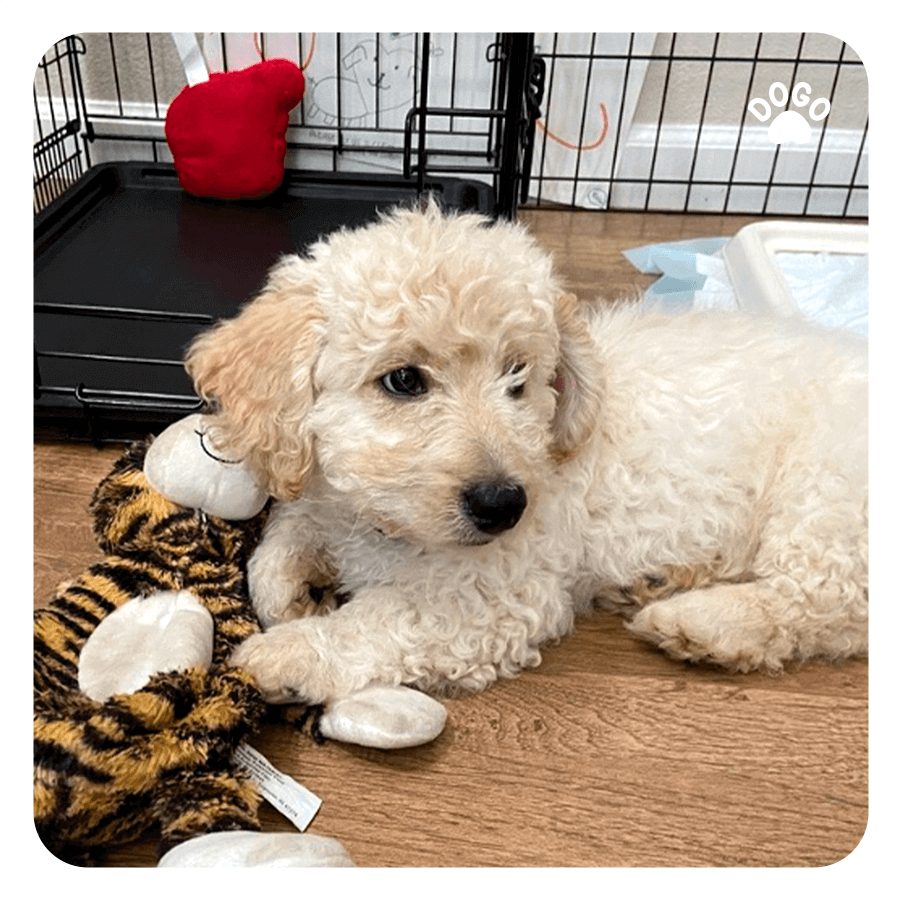 A crate is a controversial tool worldwide, yet so helpful when it comes time to educate your puppy! Using a crate prevents the destruction of household items and over-excitement in a multi-dog home. It can be a great tool to help with potty training. However, it is difficult for some dogs to hold back, and accidents still happen. It’s frustrating to clean up pee in the crate, but before getting angry at your puppy, you should ask yourself why your dog pees in the crate.
A crate is a controversial tool worldwide, yet so helpful when it comes time to educate your puppy! Using a crate prevents the destruction of household items and over-excitement in a multi-dog home. It can be a great tool to help with potty training. However, it is difficult for some dogs to hold back, and accidents still happen. It’s frustrating to clean up pee in the crate, but before getting angry at your puppy, you should ask yourself why your dog pees in the crate.
Negative Association
Suppose your dog associates their crate with loneliness, fear and anxiety. In that case, chances are that your pup is experiencing so much stress there that they pee in it. They don’t do it to make any statement but rather because they are experiencing such an intense emotion that they cannot contain themselves. If this is the case with your dog, first ask yourself if the crate is essential or if you are using it because everyone tells you to. If you can change it instead, so your dog is free in the house, in a closed room or pen, choose this option, and your dog will be more comfortable overall.
If the crate is essential, change your dog’s association with it. Dogo app will help you with it! Also, don’t just use the cage when leaving for long. Use the crate at other times of the day – sometimes with the door open, sometimes closed for a few minutes. Make it a game of getting in and out of the crate and leaving all your dog’s food, bones and chewing objects inside. You can try desensitization techniques, such as gradual exposure to the crate, to help your dog feel more comfortable. Additionally, you can use pheromone sprays or collars to reduce anxiety and stress. Alternatively, you can try playing calming music or leaving a piece of clothing with your scent in the crate. These methods can help your dog associate the crate with positive experiences and reduce accidents. This place will quickly become their private home and a source of comfort! By doing so, accidental pees and poops will decrease.
Duration
Another reason is that your dog pees in the crate: they are there for too long! It’s even more evident if it’s a puppy. Indeed, the puppy cannot yet hold the pee for an extended period, so there is more risk of accidents. If you have to be away for a long time, make sure a family member or dog walker comes during the day to take your dog out for a potty break and to play with them before they return to the crate.
If you are leaving your dog in the crate for an extended period, consider hiring a professional dog walker or pet sitter to take them for a walk and provide companionship. Alternatively, you can try a doggy daycare or a trusted friend or family member to take care of your dog while you’re away. This way, your dog can have a break from the crate and have some fun. You can also try to give your dog some exercise before crating them, so they are more relaxed and less likely to pee.
Potty Training Not Completed
 When you have a puppy at home, the first months are dedicated, among other things, to potty training. If this training is not completed, there are always risks of accidents in the house or the crate. You must therefore be patient and continue the work: take the puppy out several times a day, especially after a nap, a meal, playtime and after drinking.
When you have a puppy at home, the first months are dedicated, among other things, to potty training. If this training is not completed, there are always risks of accidents in the house or the crate. You must therefore be patient and continue the work: take the puppy out several times a day, especially after a nap, a meal, playtime and after drinking.
Say No to Punishment
No matter why your dog pees in the crate, never punish them. A dog never does this out of bad intention or because they are angry with you. On the contrary, it is simply because they cannot yet hold the pee or because they experience too intense emotion. Punishing the dog at this point will make them more scared and worsen the problem. Also, suppose you punish them while they are inside the crate. In that case, they will likely develop even more negative associations with it.
If your dog has an accident in the crate, clean up the mess and remove your dog from the crate. Instead of punishing, reward your dog when they use the bathroom outside or in the designated area. Positive reinforcement can help your dog learn faster and associate good behavior with rewards. You can also try to interrupt your dog if you see them sniffing around or circling, as this may indicate they need to go out.
Crate Training Made Easy
Crate training can be a valuable tool for both you and your dog if done correctly. Make sure to introduce the crate gradually and use positive reinforcement to create a positive association. You can also try feeding your dog their meals in the crate or leaving toys and treats inside. This will help your dog see the crate as a safe and comfortable space. Additionally, make sure to take your dog out frequently and provide plenty of exercise and mental stimulation. A tired dog is less likely to get into trouble and more likely to sleep comfortably in the crate. With patience and consistency, you can help your dog overcome any issues with crate training and enjoy a happy and healthy life together.
In short, you must be patient and persevering in solving this problem. Take the time to identify the cause of accidents and intervene accordingly. If necessary, or if you believe you are in a situation other than those mentioned above, consult your vet or dog behaviourist, who can help you come up with a personalised plan to solve the issue.



